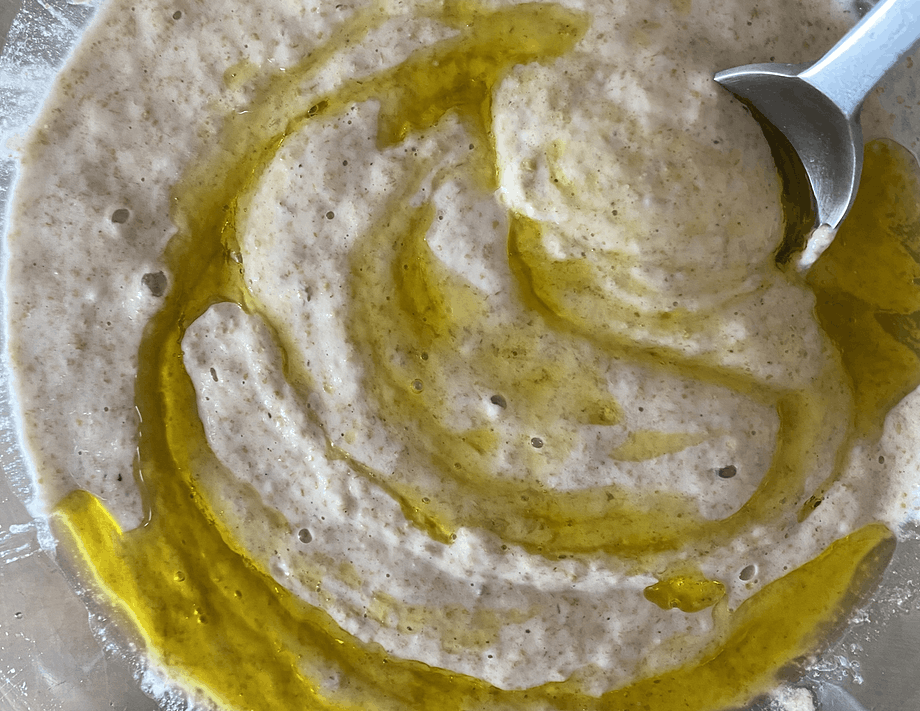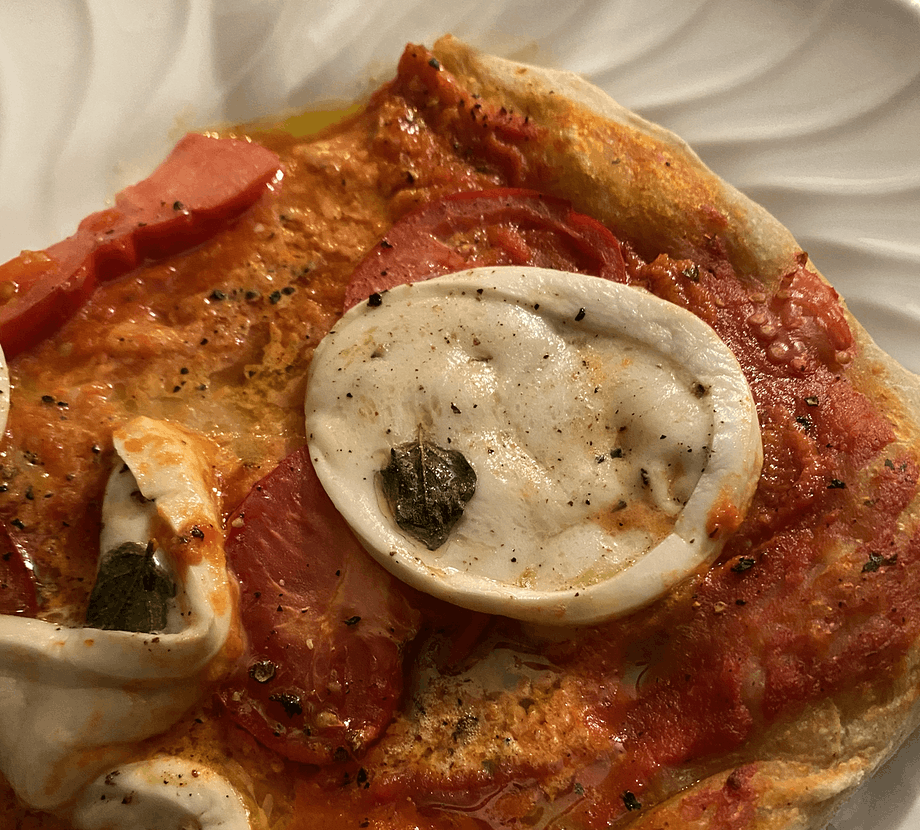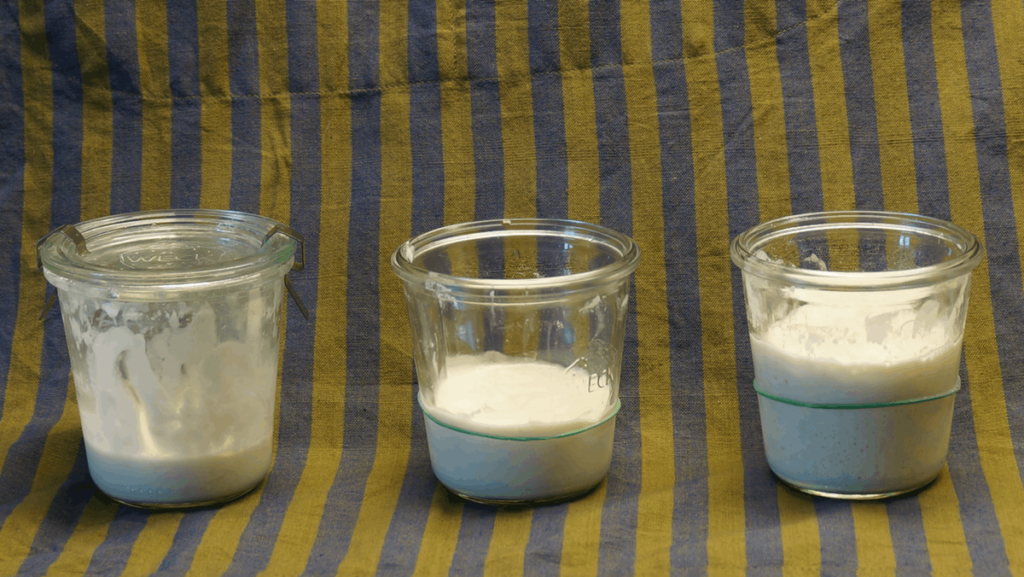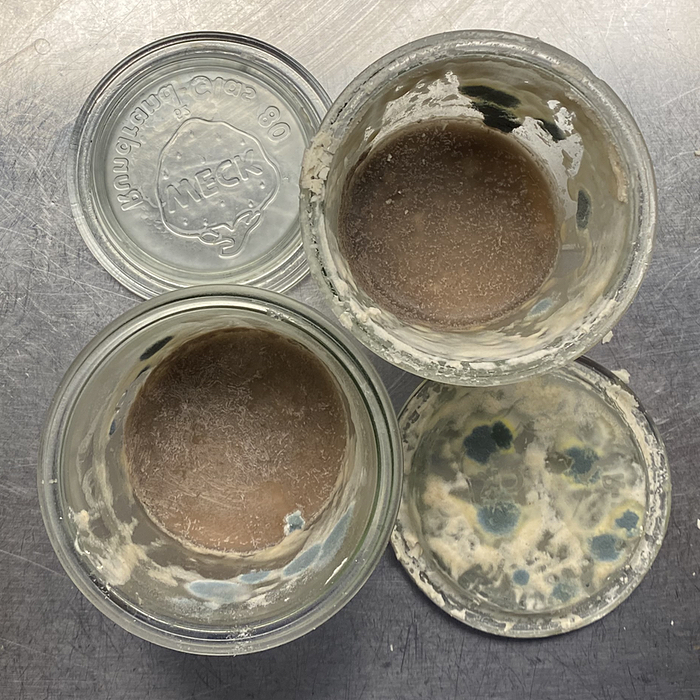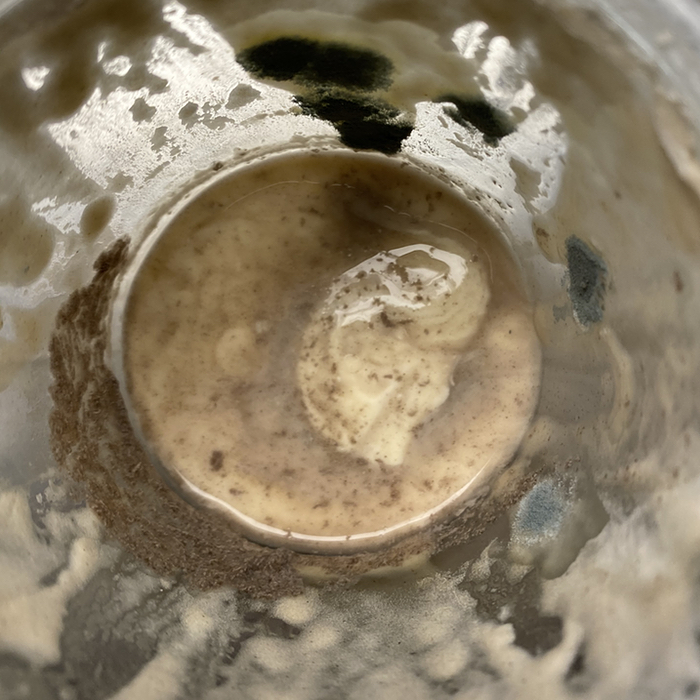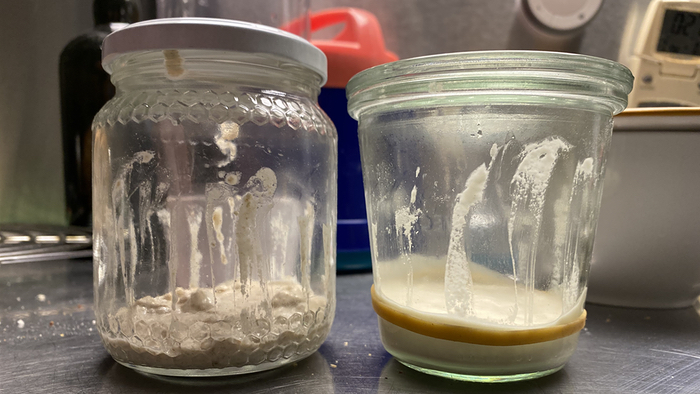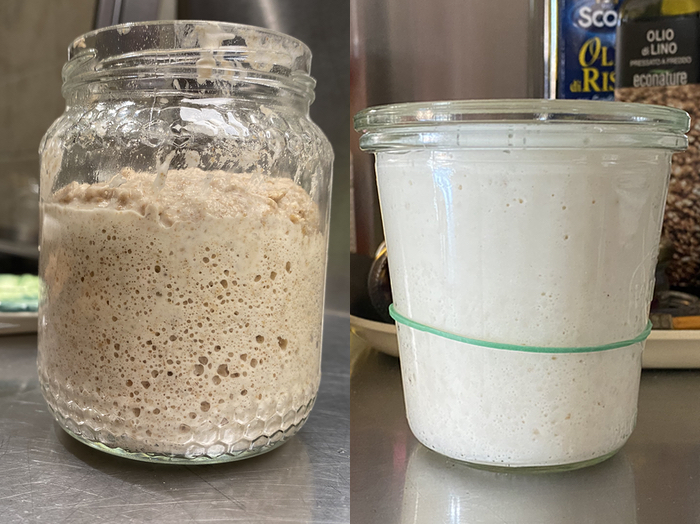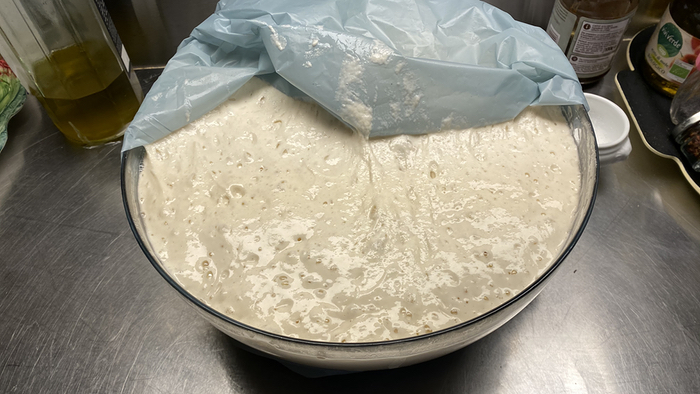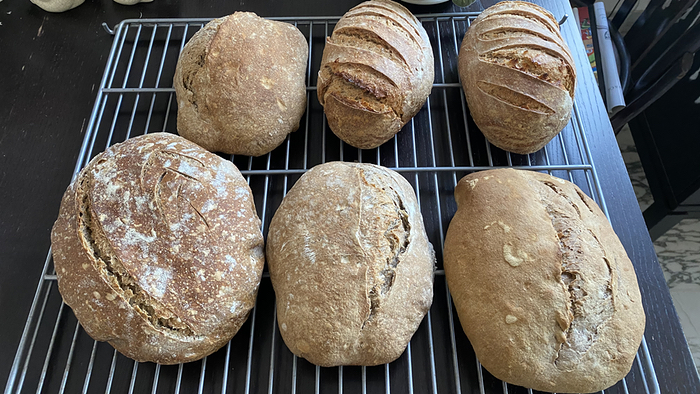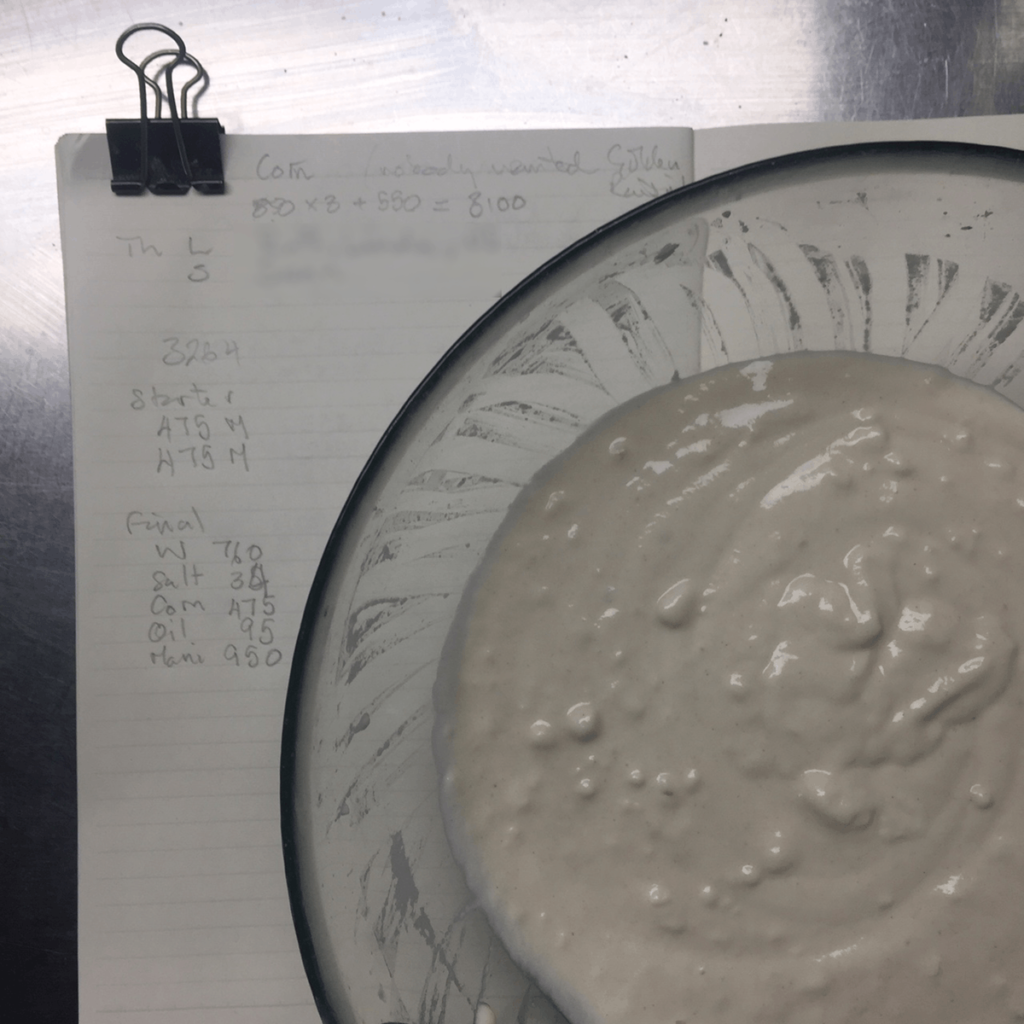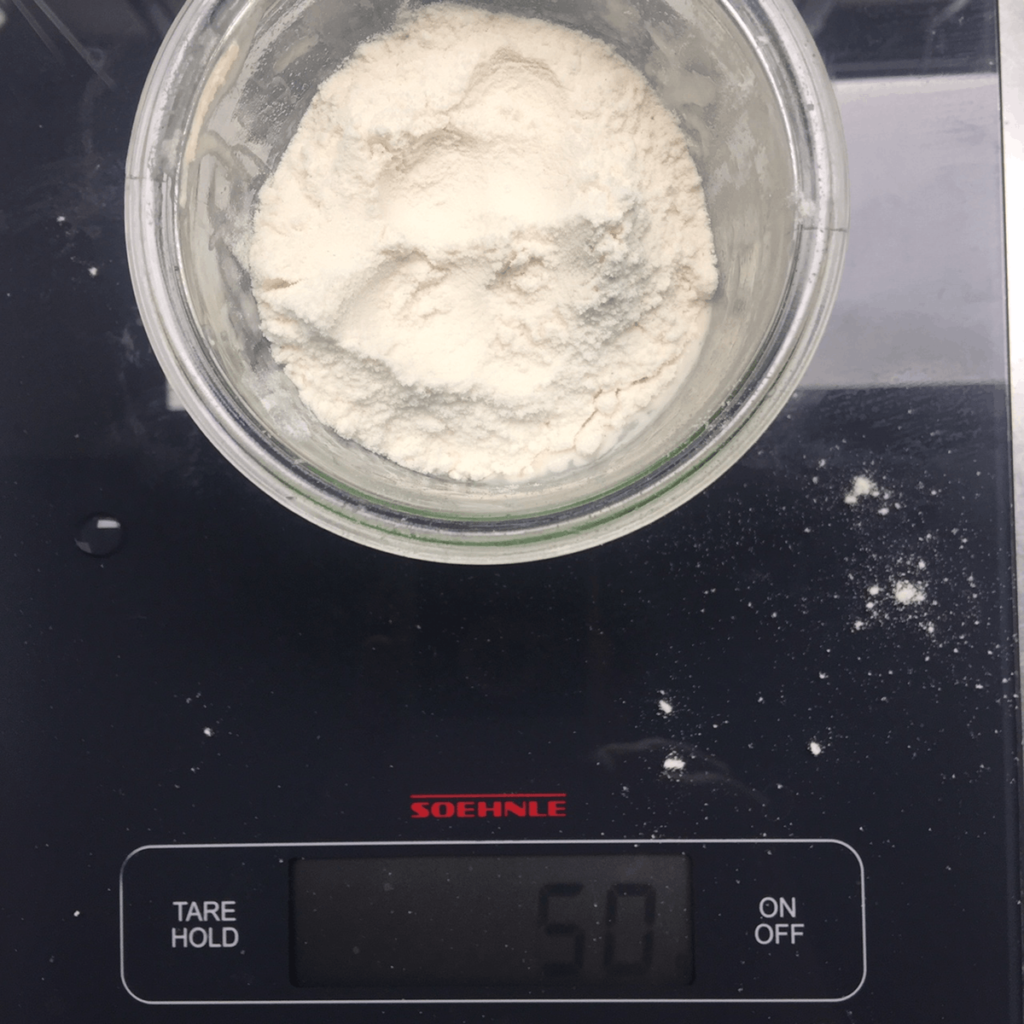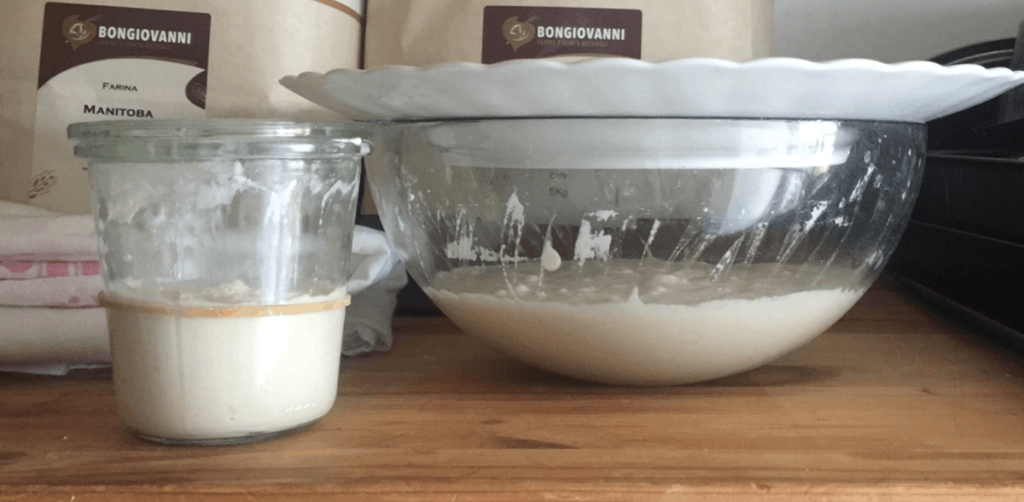Some praise yesterday for my sourdough bagels made me realise that I had never shared the recipe here. Very remiss of me, so here goes.
The point about bagels, and this I have noted before, is that like ciabatta, the ones you can easily buy are bagels in name alone. For a dense, chewy bagel with a nice shiny crust, you have to make your own, especially if you live in Rome. My recipe is based on one I found 10 years ago in The Fresh Loaf, an invaluable resource for bakers of all stripes. That thread is still going strong, by the way, as people want to make bagels in the time of Covid, which is exactly what I was doing.
So, to business. I’ve made the recipe with yeast, and I also converted it to sourdough, which is what I’ll share here. It is actually very fast, a couple of hours from start to finish, but you could probably do an overnight bulk rise in the fridge if you prefer. I like to start in the morning so that there are fresh bagels for lunch.
Let me note too, that there is no hint of sourness about them. If anything, they are slightly sweet, and note that there is no salt in the recipe.
Ingredients (for 12–13 bagels)
200 gm ripe starter at 100% hydration
360 gm water
40 gm white sugar
9 gm malt powder (probably optional)
1 egg
10–15 ml olive oil
900 gm strong white flour
2 heaped tablespoons brown sugar
Seeds (sesame, poppy, etc all optional)
Method
Build your leaven using your preferred method so that you will have 200 gm of ripe leaven when you plan to bake. My starter is currently good and active, so I just did one build the night before, but you may want to do two builds.
Mix the starter with the water, olive oil, egg, sugar and malt powder. Add the strong flour, mix it up a bit in the bowl and tip it all out onto the counter. At this stage the dough is very dry and there is spare flour everywhere. You are going to have to work hard for 15 minutes to get all the flour incorporated into a very stiff dough. Set your timer, plant your feet firmly and get going on the kneading, using your entire upper body to press, fold and turn, press, fold and turn. The dough will, I promise, come together and will eventually feel alive under your hands.
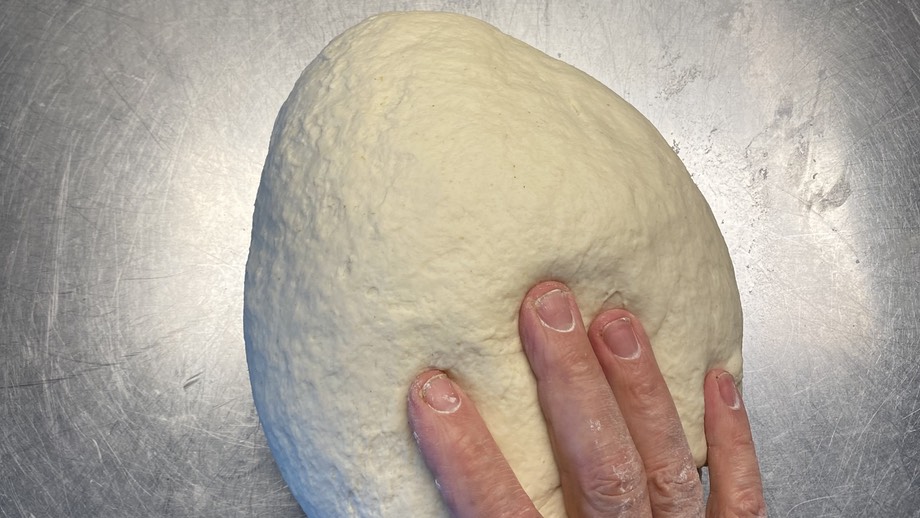
Bagel dough is stiff and hard work, but ultimately rewarding. This is double the quantity in the recipe, because friends.
After 15 minutes of kneading, return the ball of dough to the bowl, cover with a damp tea-towel and take a break. You deserve it.
The dough now gets a very short bulk fermentation. When I make these with yeast, I follow the instructions and give about an hour. Yesterday, with a leaven, I extended that to an hour and a half, and it was probably a little long. An hour will do it.
Preheat your oven to about 220°C. Prepare baking trays. Pour your chosen seeds, if any, into a saucer.
Shortly before the time is up, bring a large pot of water to the boil, adding two heaped tablespoons of brown sugar.
Weigh the dough and decide how many bagels you want; I generally go for 13 at about 120 gm each. Scale all the individual bagels first, leaving them on the counter. I’m not brilliant at judging dough by eye, so at this stage each bagel is a pile of bits of dough. I give each pile in turn a quick roll on the counter to amalgamate the bits.
Now use both hands to roll each ball out into a snake, slightly tapered at the ends. You are also pressing down the dough, so the bagels aren’t light and airy. My trays fit six bagels, so I do them in batches of six.
When you have rolled all the snakes, form the bagels. Just grab the snake, wrap it around overlapping the two ends and squeeze them together. It isn’t super easy, but you’re not baking for looks alone. Drop the bagels into the actively boiling water. I do it in two batches of three; you don’t want to crowd the pot.
After about a minute, they may float to the surface. If not, gently loosen them from the bottom of the pot with a fish slice or similar. When they float, they’re done. Lift them out of the water and onto a grill.
Carefully — they are hot and squishy — lift them off the grill and onto the saucer full of seeds. Place them on the baking sheet, seeds uppermost, and slide them into the hot oven for 20 minutes. Rotate after the first 10 minutes. The first batch may need a couple of minutes more if the oven is not fully preheated.
And there you are, proper bagels. Knowing how hard you worked kneading the dough, you can indulge yourself when the time comes to eat them. Let me know how you get on.
My thanks to Carol, aka Apprentice, who posted the recipe originally, and to all the people who make The Fresh Loaf such a friendly and useful place.


